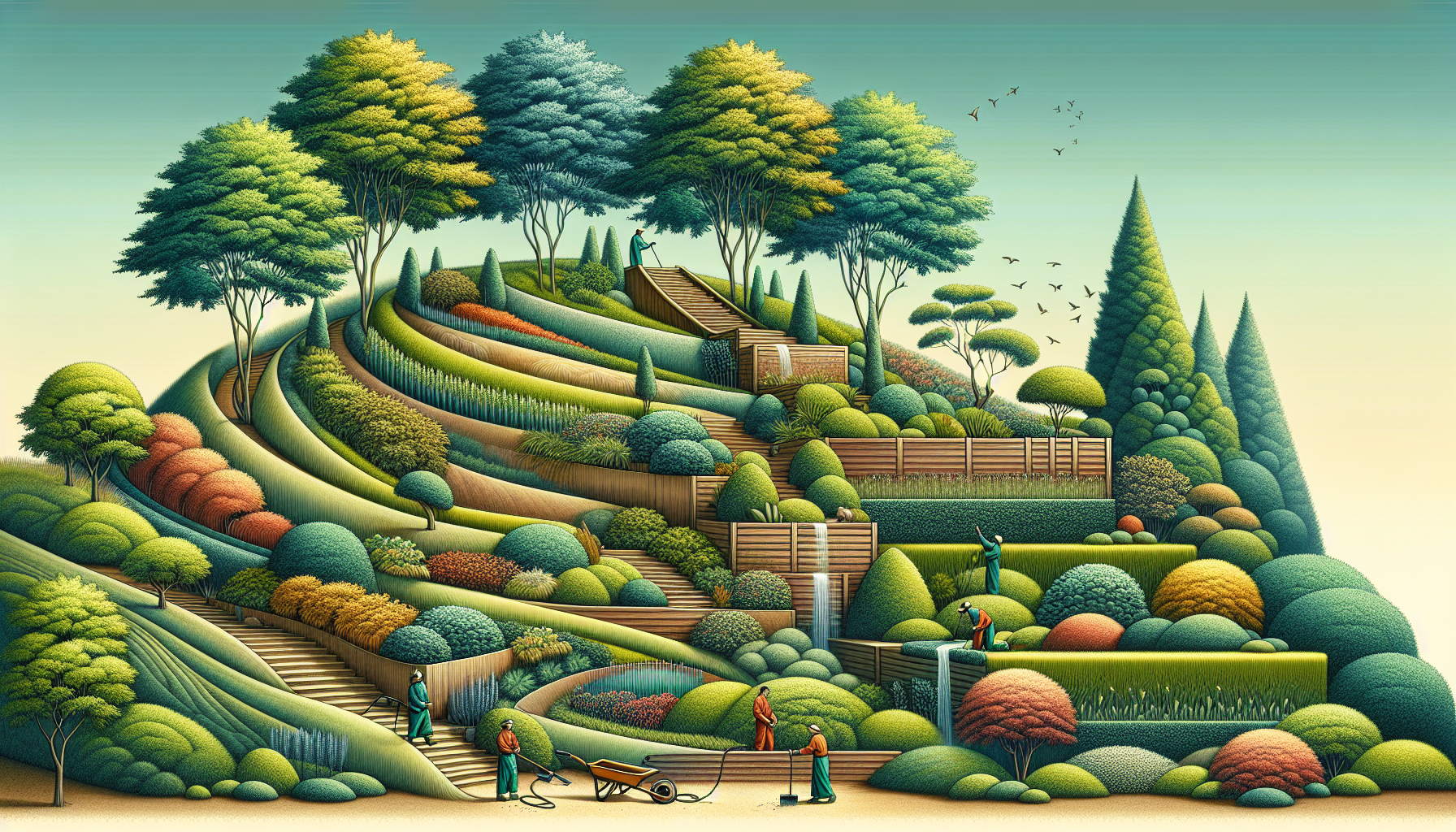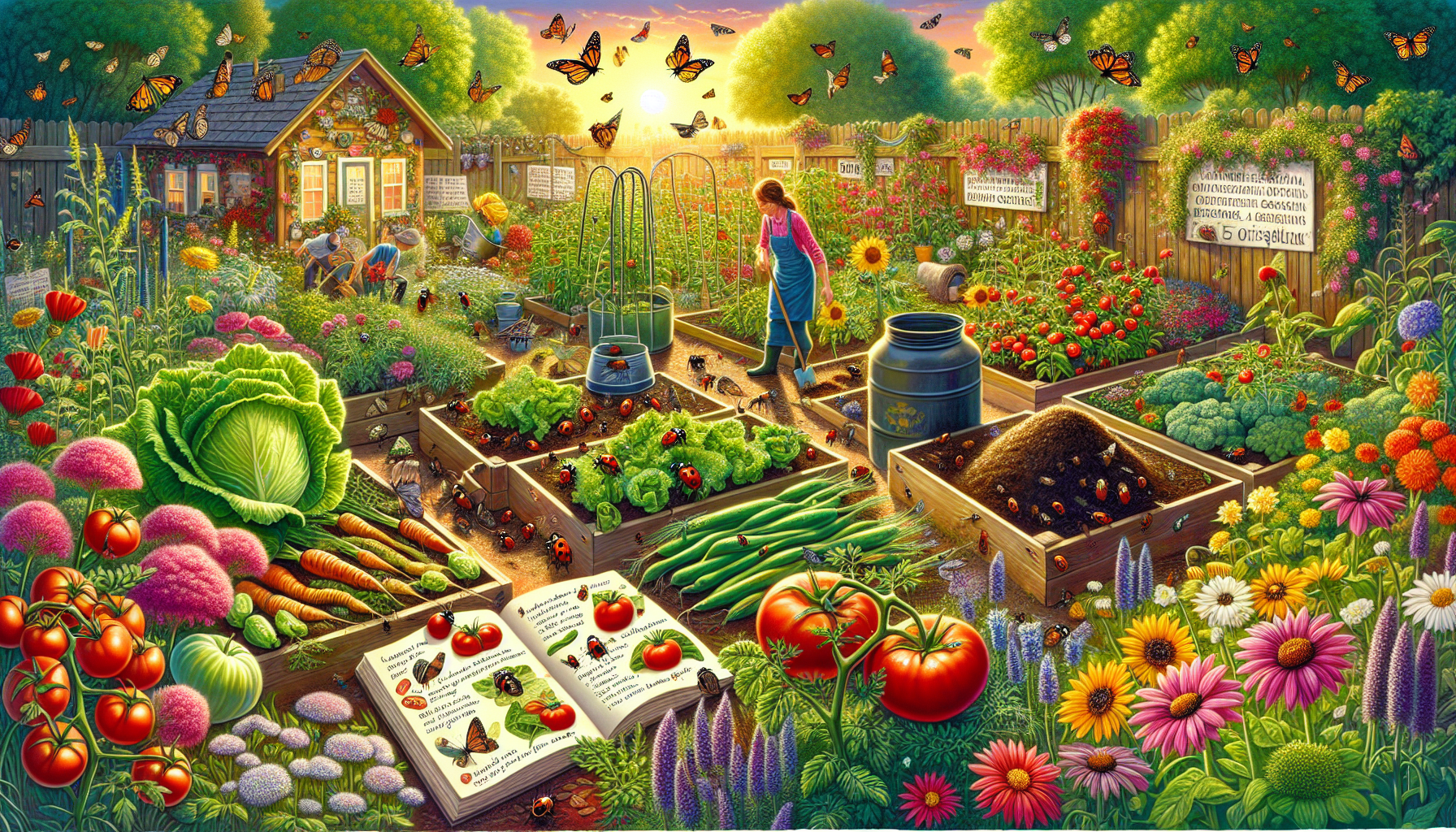Incorporating Edible Plants into Your Landscape is a transformative approach to gardening that combines the beauty of traditional landscaping with the practicality and pleasure of growing your own food. This course delves into the essentials of designing, planting, and maintaining an edible garden. From assessing your space and choosing the right plants for your climate, to implementing sustainable practices and harvesting your bounty, we explore how to create a garden that’s not only aesthetically pleasing but also nourishing.
Lesson 1

Introduction to Edible Landscaping
Edible landscaping is a revolutionary approach to garden design that combines the beauty of ornamental plants with the practicality of growing your own food. Bringing together aesthetics and productivity, this method transforms your outdoor space into a sustainable, edible paradise. In this guide, we’ll dive into how you can start incorporating edible plants into your landscape, focusing on assessing your space, planning your edible landscape, and bringing permaculture principles into play.
Assessing Your Space for Edible Landscaping
Before you begin your journey into edible landscaping, understanding the specifics of your outdoor space is crucial. Knowing your climate zone will guide you in selecting plants that are best suited to your environment. Moreover, assessing the quality of your soil through testing can provide invaluable insights into any necessary amendments to support robust plant growth. Paying attention to light, water, and space availability in your area will ensure your edible plants thrive.
Planning Your Edible Landscape
Planning is a pivotal step in the journey to a beautiful and productive garden. Start by setting clear goals. Are you looking to supplement your diet, beautify your outdoor space, or perhaps both? Incorporating design principles specific to edible landscaping can help achieve these goals. Draw inspiration from permaculture, a sustainable living methodology that promotes harmony with nature. By integrating permaculture principles, you can design a landscape that is not only aesthetic but also ecologically sustainable.
Incorporating Permaculture Principles
- Sustainability: Emphasize plant choices and gardening practices that enhance your garden’s ecological balance.
- Biodiversity: Plan a diverse mix of plants to create a resilient and productive garden ecosystem.
- Resourcefulness: Utilize local resources, such as composting organic waste, to nourish and enrich your garden.
By incorporating edible plants into your landscape, you blend the line between functionality and beauty. Whether it’s a lush vegetable garden, fragrant herb patches, or fruit trees that serve as focal points, edible landscaping offers a rewarding journey towards sustainability, health, and enjoyment.
Remember, incorporating edible landscaping is not just about plant selection; it’s also about transforming your perspective on gardening. With patience and creativity, you can ensure your garden is not only a source of fresh, nutritious food but also a place of beauty and relaxation. Start your edible landscaping journey today and embrace the blend of utility and aesthetics that it brings to your outdoor space.
Lesson 2

Choosing Your Edible Plants
When it comes to enriching your outdoor space with vibrancy and bounty, choosing the right edible plants is a crucial step. This delightful journey not only adds beauty to your landscape but also brings the joy of homegrown food right to your table. In this guide, we will explore how to select plants that match your climate and space while ensuring a harmonious blend of aesthetics and productivity in your garden.
Understanding Plant Categories
Starting with the basics, it’s important to distinguish between the different types of edible plants you can incorporate. Annuals, such as tomatoes and lettuce, complete their life cycle in one year, offering quick rewards. Perennials, like asparagus and blueberries, return year after year, providing lasting benefits. Herbs offer both culinary advantages and ornamental beauty, while edible flowers can add a pop of color and unique flavors to your dishes.
Selecting Plants for Your Climate and Space
Your climate zone plays a pivotal role in determining which plants will thrive in your garden. Choose varieties that are well-adapted to your area for the best results. Consider space-saving techniques, like vertical gardening, if your area is limited. Additionally, the practice of companion planting can enhance your garden’s health and yield by fostering beneficial plant relationships.
Aesthetic and Functional Plant Arrangement
Edible landscaping thrives on creativity. Mixing edible plants with ornamental ones can create a visually appealing space that is both productive and beautiful. Use fruit trees or berry bushes as focal points in your design. Climbing plants, like grapes or beans, can be trained on trellises to add vertical interest and save space.
Remember, incorporating edible plants into your landscape is more than just a gardening task; it’s a step towards a sustainable, aesthetically pleasing, and rewarding way of living. By selecting the right plants for your climate and space, and arranging them thoughtfully, you’ll create a garden that nourishes both the body and soul.
Lesson 3

Implementation, Maintenance, and Harvest of Your Edible Landscape
Creating an edible landscape is an enriching process that marries the beauty of nature with the practicality of home gardening. This guide will walk you through the essential steps of implementing your design, maintaining your garden for sustained health and growth, and finally, harvesting the fruits of your labor. Each step is integral in transforming your vision into a living, thriving outdoor space that provides nourishment and joy throughout the seasons.
Preparing the Ground and Planting
Bringing your edible landscape to life begins with preparation and planting. Start by enriching your soil with organic amendments to ensure your plants receive the nutrients they need. Employ natural pest control methods and consider mulching to retain moisture and suppress weeds. When planting, ensure each plant has the space it requires to reach its full potential.
Seasonal Care and Maintenance
As your garden grows, regular maintenance is crucial. Pruning and training plants not only aids in their health and productivity but also maintains the aesthetic appeal of your space. Adopting organic practices to manage pests and diseases can protect your garden without the use of harsh chemicals. Additionally, practices like succession planting and crop rotation can keep your garden productive and healthy year-round.
Harvesting and Preserving Your Bounty
The joy of edible landscaping culminates in the harvest. Timely picking of fruits, vegetables, and herbs ensures the highest quality and flavor. But the abundance can sometimes exceed immediate needs. Learning preservation techniques like canning, drying, and freezing allows you to enjoy the fruits of your labor long after the growing season has passed.
Embarking on the journey of creating an edible landscape is a rewarding endeavor that enhances your connection to the food you eat and the environment around you. Through careful planning, attentive care, and joyful harvesting, your garden can provide both sustenance and beauty for many years to come.
Incorporating Edible Plants into Your Landscape offers a fresh, rewarding approach to gardening that enriches your outdoor space with beauty, sustainability, and nourishment. Throughout this course, we’ve explored how to assess your space, select suitable plants, and maintain a thriving edible garden. As we conclude, it’s clear that integrating edible plants into your landscape not only enhances your garden’s aesthetic appeal but also contributes to a healthier, more sustainable lifestyle. To test your knowledge and ensure you’re ready to transform your own landscape, a 10-question quiz is available below. This quiz is designed to reinforce key concepts and practices covered in the course, helping you embark on your edible landscaping journey with confidence.
Test Your Knowledge With this short Quiz
Click here to copy your score to share on facebook!







